Psssst: Here’s what you need to know about Florida’s 6 venomous snake species
Bad news for people who don’t love snakes: There are 44 different slithery species that call Florida home. Better news: Only six of those species are venomous.
Florida Fish and Wildlife Conservation Commission officials said most Florida snakes are harmless and beneficial and remove extra rodent populations. Even the venomous ones are not particularly dangerous unless stepped on or otherwise provoked.
>>> STREAM CHANNEL 9 EYEWITNESS NEWS LIVE <<<
But it’s still a good idea to be able to recognize the different species to know which ones to steer clear of if you spot them.
Here’s what you need to know about each of the six venomous species, according to FWC:
READ: Lovebugs: 9 facts about the bugs Central Floridians love to hate
Diamondback rattlesnake
The eastern diamondback rattlesnake is the largest and most dangerous of the snakes that are native to Florida. FWC officials say it also ranks high on the list of venomous snakes in the world.
Officials say these snakes should be treated with “extreme caution.”
You can spot one by recognizing its distinctive pattern of yellow-bordered, diamond-shaped body markings as well as the brittle, button-shaped rattling mechanism at the end of its tail and arrow-shaped head that is much wider than its neck.
FWC officials say diamondbacks are found throughout every county in Florida, but are most commonly found in palmetto flatlands, pine woods, abandoned fields, and brushy grassy areas.
Photos: See Florida’s 6 venomous snake species
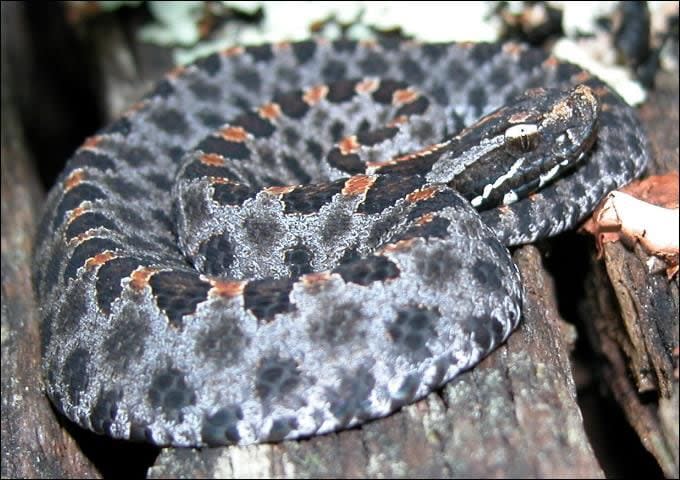
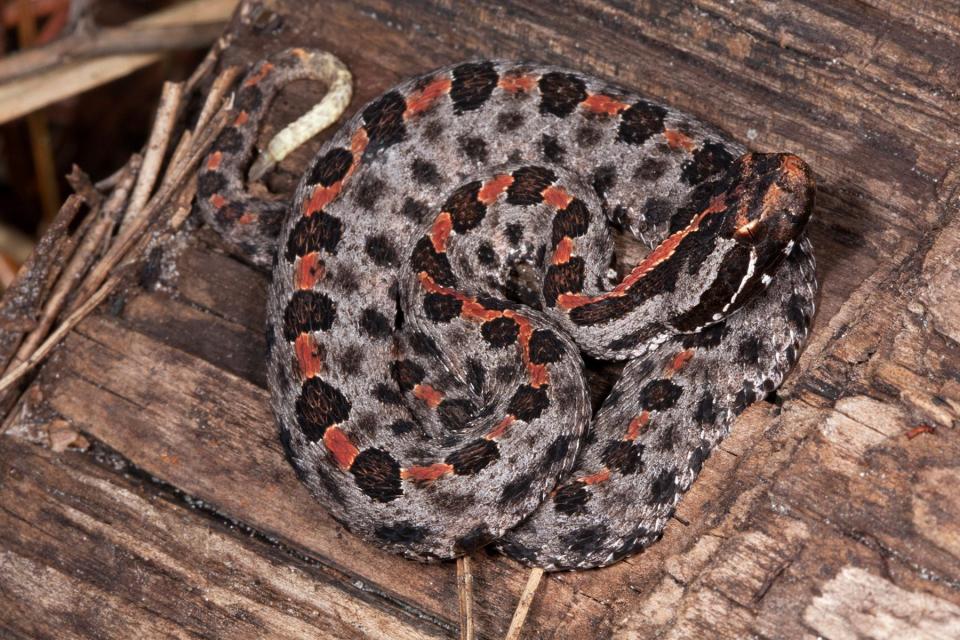
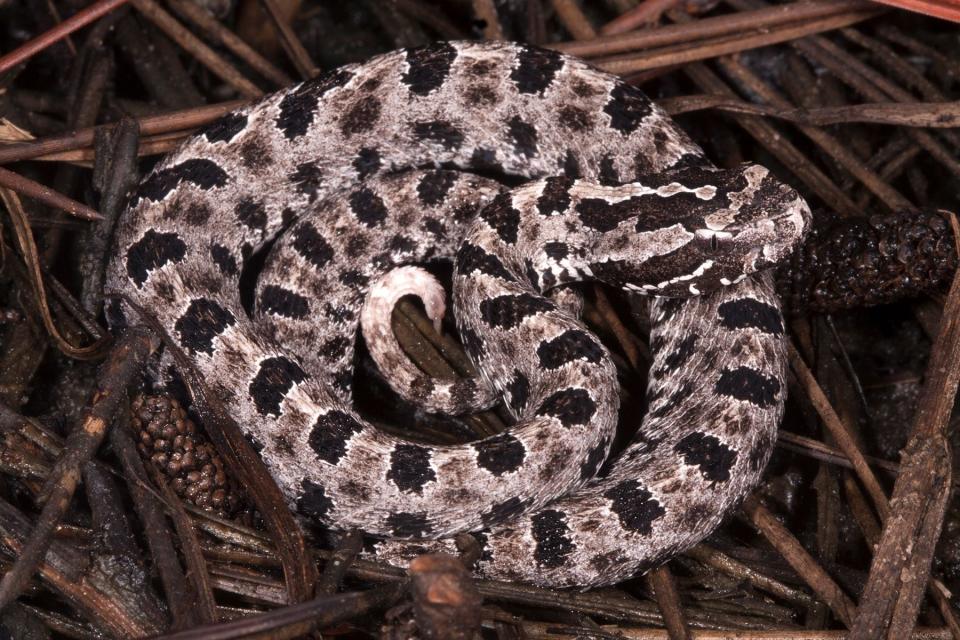
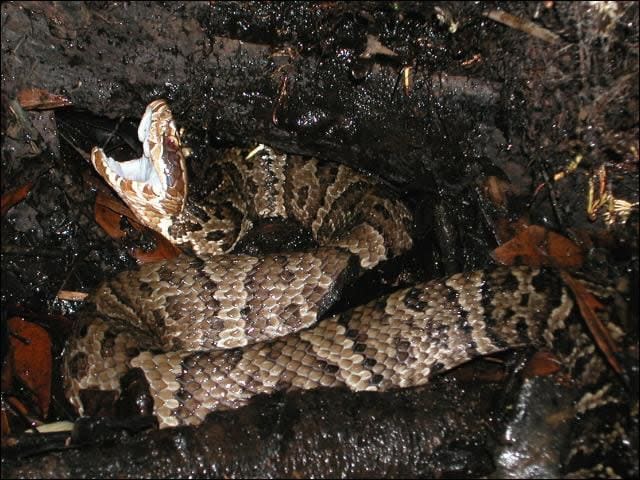
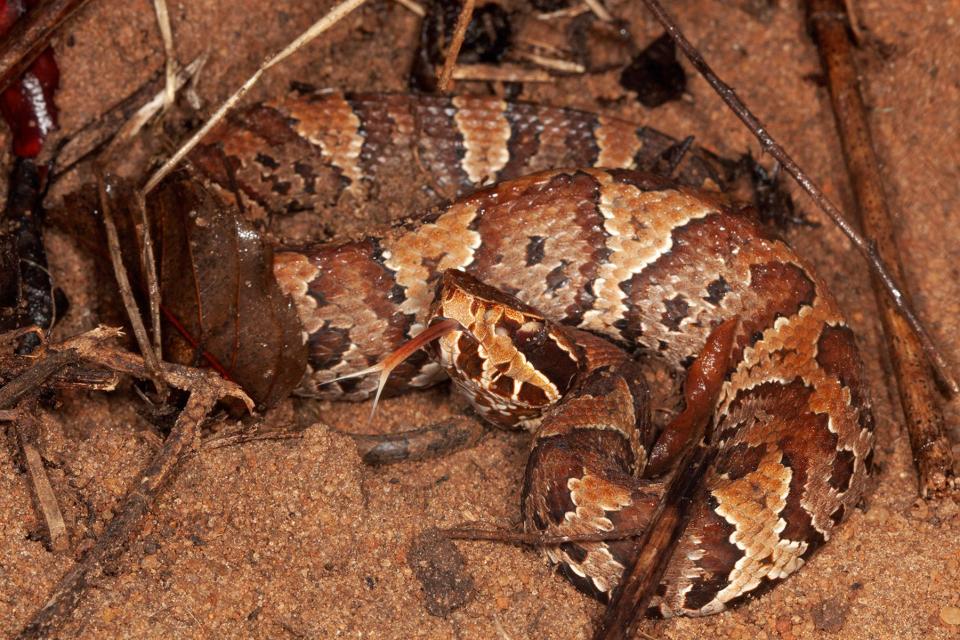

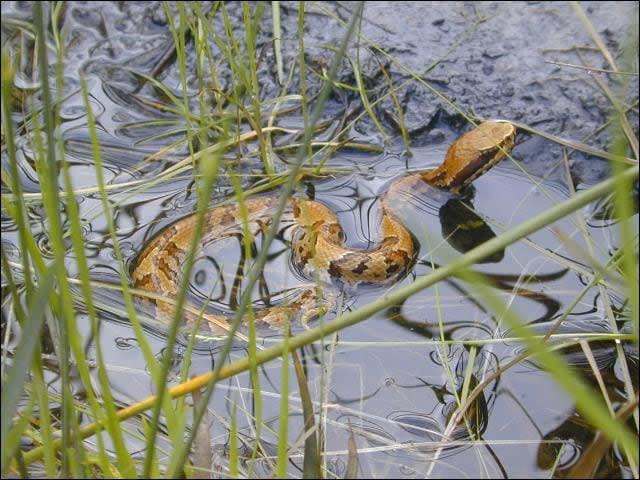
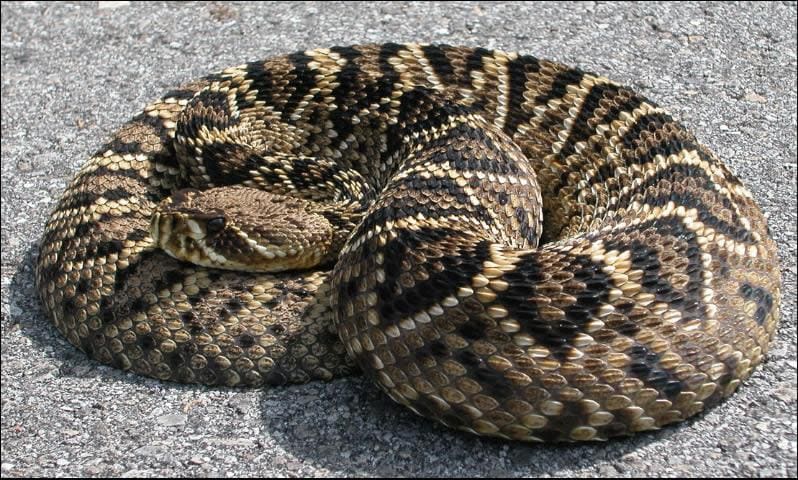
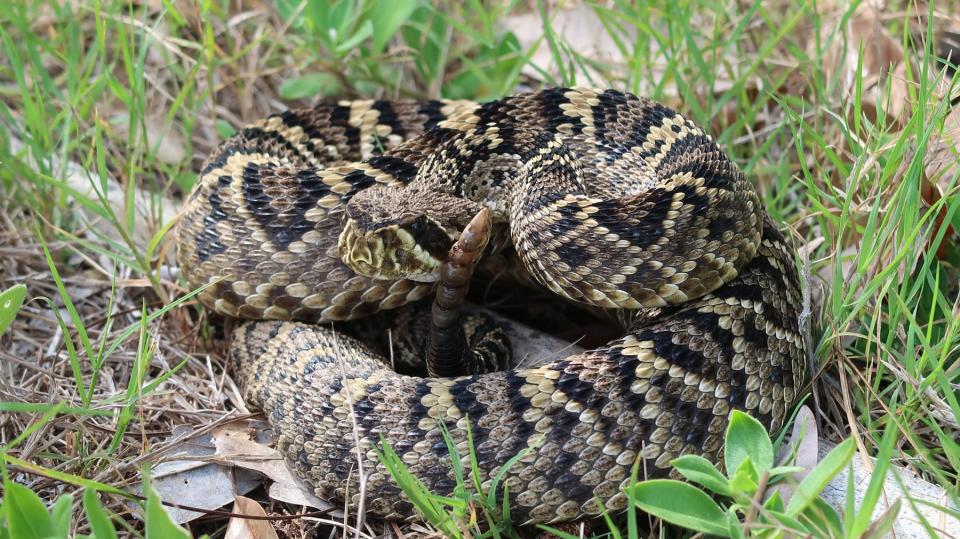
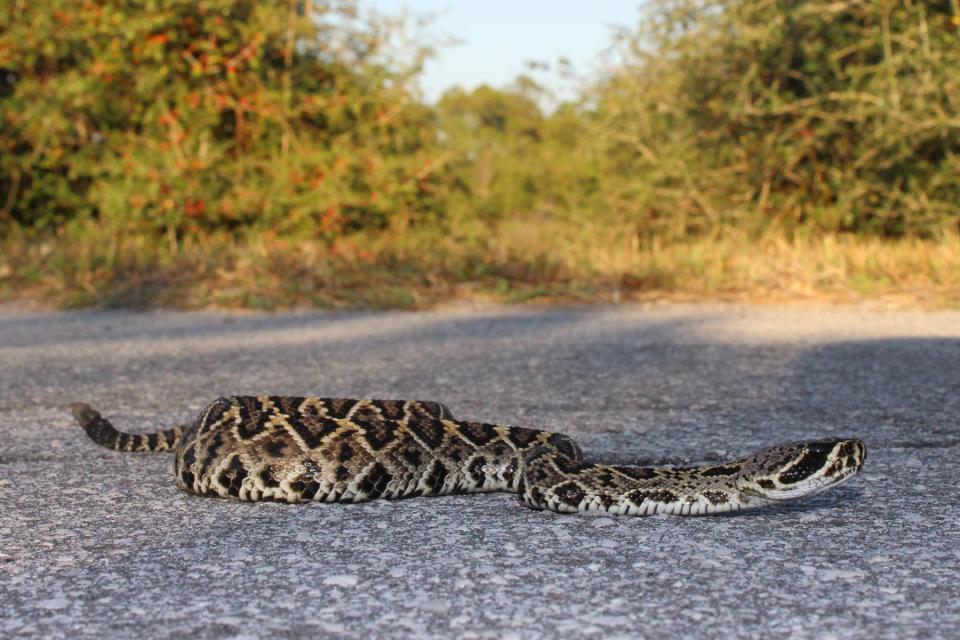
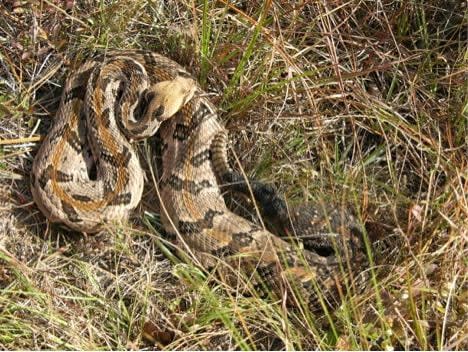
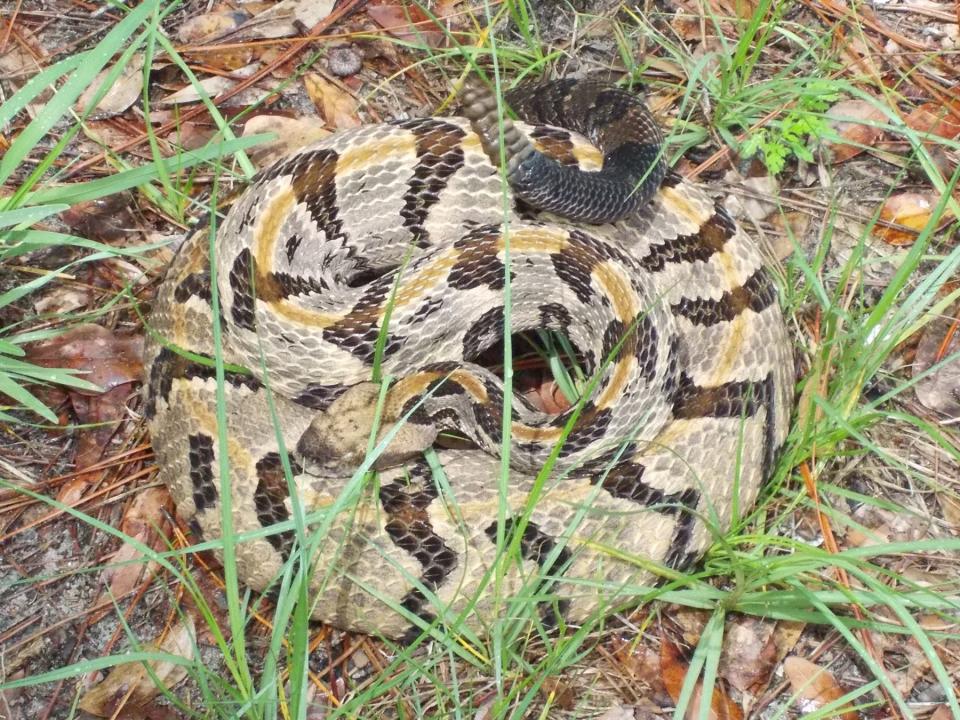

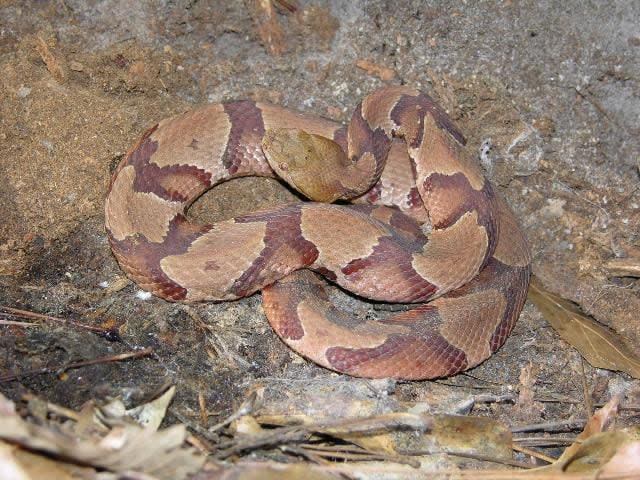
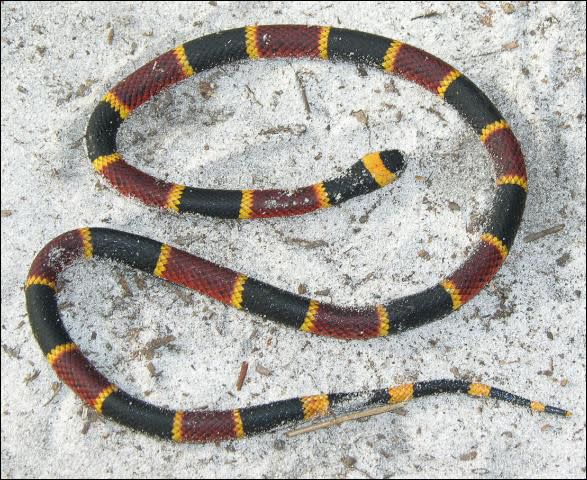
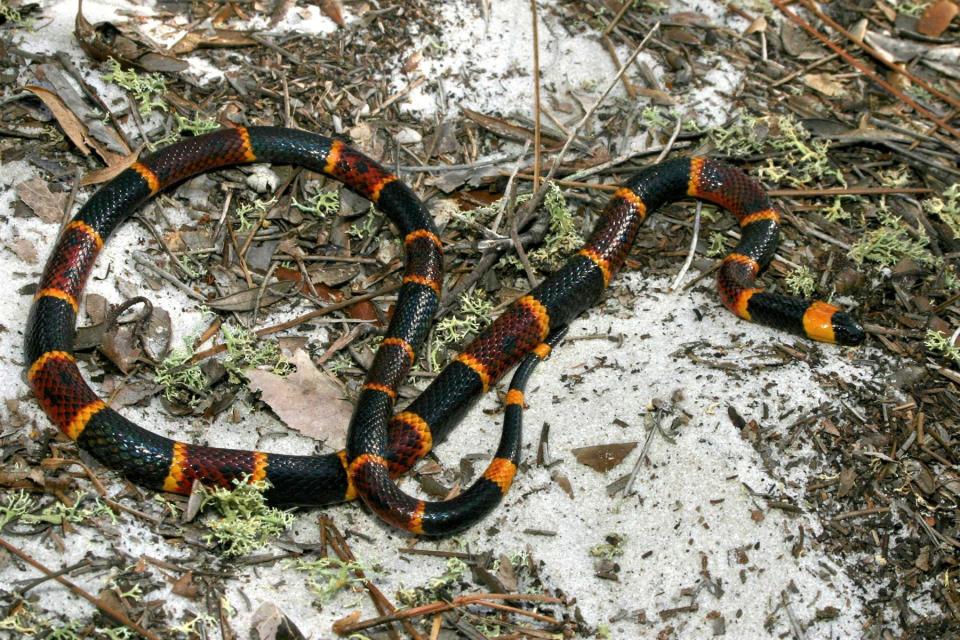
Canebrake rattlesnake
The canebrake snake can be distinguished by its grayish-brown or pinkish buff color, with dark bands across its body and a brown or black tail with a rattle at the end. Its head is also much wider than its neck.
Good news for Central Floridians: This snake is restricted mostly to North Florida, only making its way as far south as Alachua County.
These snakes are usually found in flatwoods, river bottoms, hammocks, abandoned fields and around farms.
WATCH: What to do if bitten by a snake
Pygmy rattlesnake
The pygmy rattlesnake, which is also known as the ground rattler, is found in every county in Florida.
The snake has a small rattler, which makes a sound similar to the buzzing of an insect that can be heard from only a few feet away.
Officials said pygmy rattlers are gray and stout-bodied. They are marked prominently with rounded, dusky spots. Starting at the base of its head, reddish spots alternate with black along the midline of the back.
These snakes are found in palmetto flatwoods or in areas of slash pine and wiregrass. Officials said it’s often found in areas with lakes, ponds or marshes.
The semi-good news is that while its bite can be deadly to humans, no deaths from the species’ bite have been recorded.
READ: Slithery surprise: 7-foot snake found in California man’s couch
Cottonmouth
Cottonmouth snakes are found in every Florida county. This species loves water and can be found along stream banks, in swamps, on the margins of lakes and in tree-bordered marshes.
You can distinguish a cottonmouth by its olive-brown to black color pattern, with or without dark crossbands on its body. Officials said it has a stout body with an abruptly tapering tail and a broad head that’s much wider than its neck.
It also has a distinctive mark of a dark band extending from its eye to the rear of its jaw.
The snakes’ bite can result in “great pain and severe swelling,” but with immediate and proper medical treatment, it is only occasionally deadly to humans.
READ: Florida researchers find rare snake eating giant centipede
Copperhead
Florida is the southern boundary of where copperheads are found, which means it’s rare to spot the snake in most of the state. It is seen most notably in Liberty and Gadsden counties in the northwest portion of the state.
It can be spotted by its pinkish-tan color, with reddish-brown crossbands on its body. Officials said the bands are wide along the sides and narrow along the snake’s back to form an hourglass shape. Its copper-colored head is also wider than its neck.
Officials said many reported copperhead sightings end up being young cottonmouth snakes because of their similar appearance. It’s so uncommon to see one in Florida that officials said there have been very few bites involving copperheads reported in the state and no deaths.
READ: Family finds venomous snake in their Christmas tree
Coral snake
FWC officials say the coral snake’s venom is the most potent of any snake in North America. It is closely related to the cobra, krait and mamba.
Most times, people are bitten by coral snakes when they pick up the “pretty little snake,” not realizing how venomous it is.
It is often confused with the harmless scarlet kingsnake, which it closely resembles. Both have red, black and yellow bands, but can be differentiated by the rhyme “red touch yellow, kill a fellow; red touch black, good for Jack.”
The coral snake also has a black nose, while the kingsnake’s nose is red.
Coral snakes are most commonly found in pine woods and the jungle-like borders of Florida lakes and ponds. It likes rotting logs, decaying vegetation, heavy fallen leaf cover and old brush piles.
READ: Pleasssant dreamsss: 18 snakes found in bedroom
Click here to download the free WFTV news and weather apps, click here to download the WFTV Now app for your smart TV and click here to stream Channel 9 Eyewitness News live.

